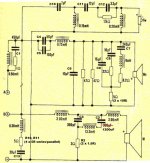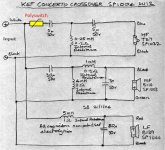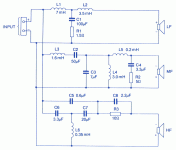Since I have three pairs of KEF C80s, I thought I might try a little experiment. It seems the premise behind the design of the C80 crossover was to create a uniform 4 ohm resistive load (or as close as they could get) for the amplifier. This produced what some people have described as "the World's most complicated crossover". The amplifiers that I usually use tend to be ones that don't have problems running into low impedance loads. So I was wondering, would it be possible to re-design a crossover for the C80 that doesn't concentrate so much on impedance matching, instead just getting the correct range of frequencies to the right driver. Now I realise KEF probably knew best when designing this crossover, but some of us can't help tinkering with this old stuff, right?
Maybe the new design crossover could mimic something like the KEF Concerto or the Constructor series CS7? The only snag here is, the Concerto and CS7 used the B139/B110/T27 driver compliment, whereas the C80 used the B139/B160/T33 drivers. Not only but also, the drivers in the C80 were all 4 ohms, the B139 itself is the unique SP1212 version.
Think it's worth trying? I have no idea how to design a suitable crossover though. I'm cross-posting this in a couple of other forums as well.
Lee.
Maybe the new design crossover could mimic something like the KEF Concerto or the Constructor series CS7? The only snag here is, the Concerto and CS7 used the B139/B110/T27 driver compliment, whereas the C80 used the B139/B160/T33 drivers. Not only but also, the drivers in the C80 were all 4 ohms, the B139 itself is the unique SP1212 version.
Think it's worth trying? I have no idea how to design a suitable crossover though. I'm cross-posting this in a couple of other forums as well.
Lee.
Attachments
Last edited:
The three components in the lower left appear to be there just for the amplifier. I don't see that about any of the others. Some of those that appear to be doing this are actually adjusting the response. Those that might be working on the impedance between the crossover and the driver are helping the crossover (so to speak), not the amp.
It is debatable whether simulating this to condense the network down to an alternative, simpler version that has precisely the same effect, is worthwhile. I wouldn't hurt though.
It is debatable whether simulating this to condense the network down to an alternative, simpler version that has precisely the same effect, is worthwhile. I wouldn't hurt though.
- Status
- This old topic is closed. If you want to reopen this topic, contact a moderator using the "Report Post" button.


